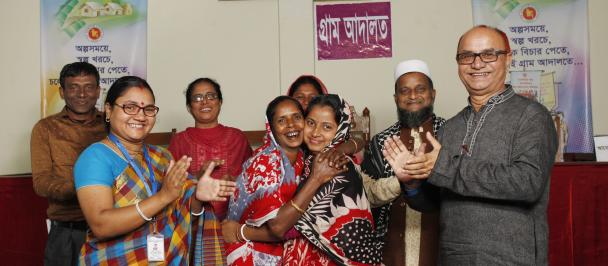Restoring Springs and Reviving Endangered Fish: A Community-Led Conservation Success Story in Bangladesh
Indigenous effort in Bangladesh helps reverse endangered fish’s slide to extinction
January 21, 2024
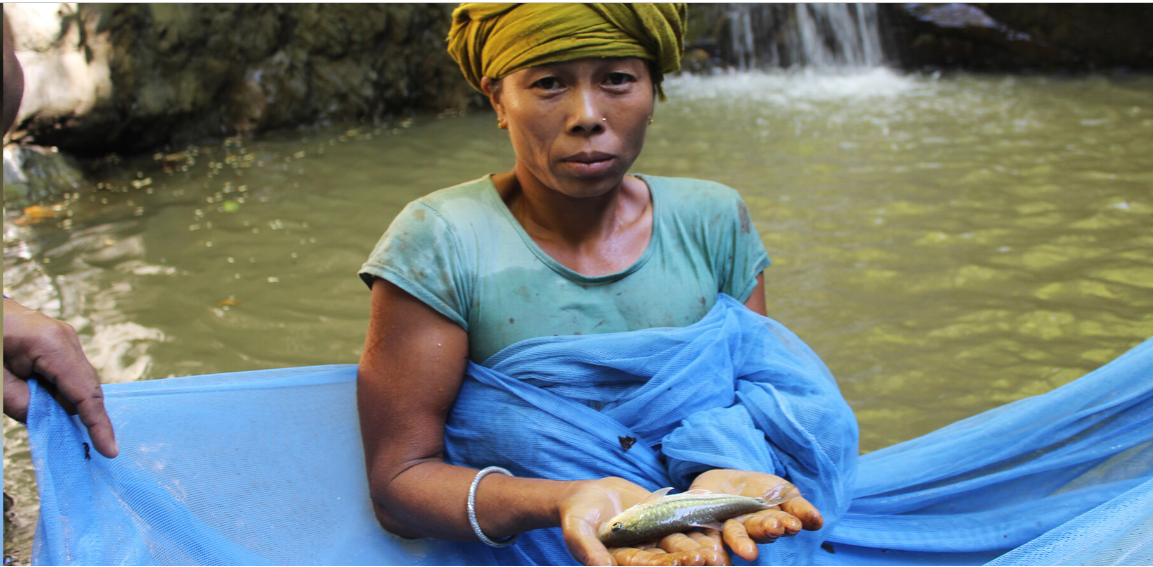
An Indigenous woman shows a Tor putitora fish from the newly revived Digholchari Hajachara spring.
By Rafiqul Islam
The Blog was first published in MONGABAY. Click here to read the original publication.
Unchecked logging and quarrying of rocks from streambeds in Bangladesh’s Chittagong Hill Tracts led to springs drying up and populations of putitor mahseer fish, an endangered species, disappearing.
The situation was worsened by climate change impacts, characterized here by a more intense dry season during which even streams that once ran year-round now dry up.
A project launched in 2016 and backed by USAID and the UNDP is working with Indigenous communities to reverse this decline, starting with efforts to cut down on logging and quarrying.
As a result of these efforts, areas where forests have been conserved have seen the flow of springs stabilize and populations of putitor mahseer and other fish revive.
DHAKA — Lika Chakma, 37, says she can still remember her childhood days when the springs in the Digholchari Hajachara area of eastern Bangladesh, where she grew up, flowed year-round. These perennial water bodies supported not only the lives and livelihoods of the communities in the region, but also diverse fish and aquatic wildlife.
Among these was the putitor mahseer fish (Tor putitora), which abounded in the springs of her village. An endangered species, it’s native to this part of South Asia, ranging as far west as Pakistan, where it’s the national fish of that country.
But the putitor mahseer began disappearing after locals started destroying the forests and quarrying rocks from the streambeds. With the springs drying up, there was little habitat left for the putitor mahseer.
Climate change is making the situation worse. According to a 2016 study, the Chittagong Hill Tracts (CHT) region where Digholchari Hajachara is located now experiences an increase in the overall rainfall in the monsoon season but a decrease in dry season rainfall. So while the springs flowed during the wet season, these once perennial water bodies were drying up during the rest of the year.
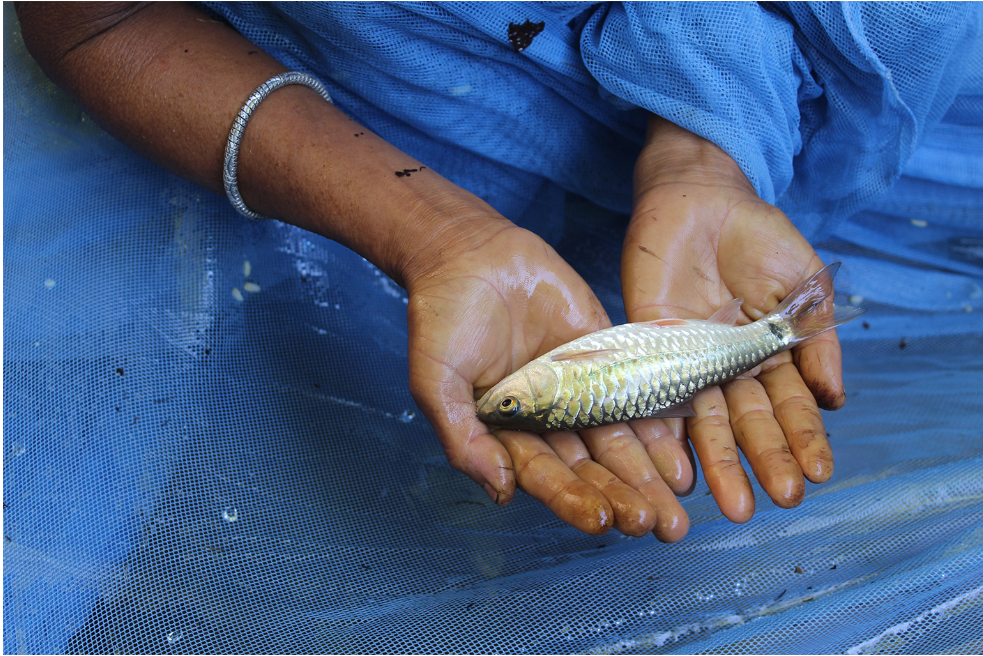
A Tor putitora fish was collected from Devarmatha spring to study how the species is faring there and was later released back. Image by Rafiqul Islam for Mongabay.
“When we started felling trees from the natural forests and taking rocks from our springs and streams, the springs were not discharging enough water for us,” Lika said. “And, at one stage, the natural water sources dried up during the dry season, destroying the fish species.”
Lika and other locals are now pushing back against this decline. They serve as conservation volunteers under the USAID-funded CHT Watershed Co-Management Activity (CHTWCA), helping restore threatened fish species, in particular the putitor mahseer, to the area’s water bodies.
Long-running efforts to tackle logging and overextraction of forest resources have helped improve forest health and the revival of springs. The conservation volunteers also police the catching of fish from headwaters uphill to ensure there’s a thriving population downstream for breeding and dispersal.
The CHTWCA falls under the U.N. Development Programme’s Strengthening Inclusive Development in Chittagong Hill Tracts Project, and is being implemented by the Chittagong Hill Tracts Ministry with support from USAID and the UNDP. Started in 2016 and slated to run for 10 years, it has already recorded some success.
“Once we began conserving our common forests three years ago under the CHTWCA, the Digholchari Hajachara spring started returning to its old nature,” Lika said. “Now, our community has decided to protect the Digholchari Hajachara Para Village Common Forest [VCF], and we are not allowed to harvest forest resources without the approval of the VCF management committee.”
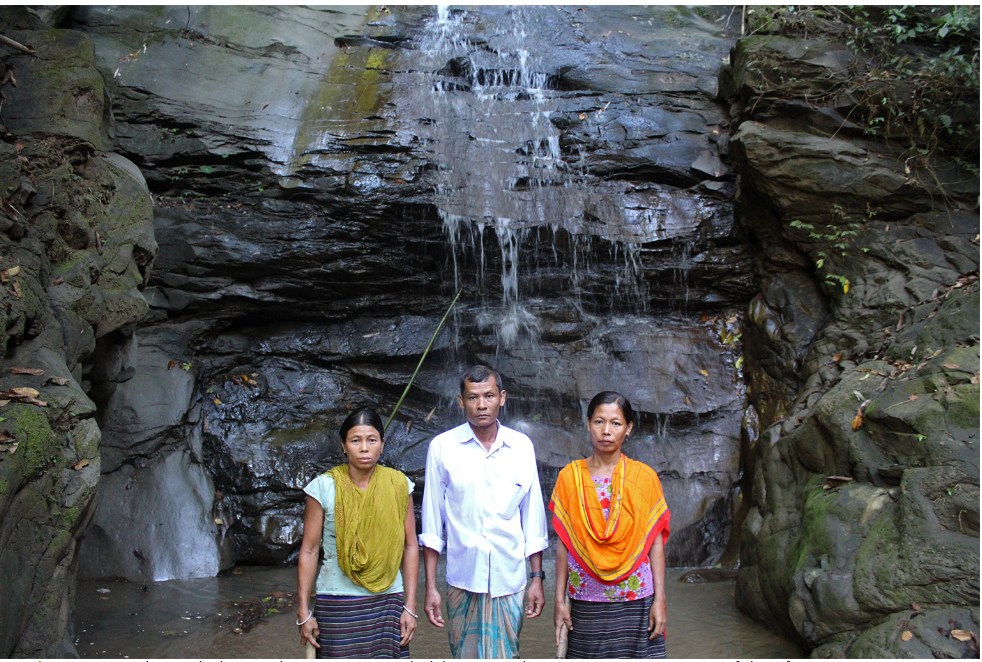
Indigenous people regularly visit the springs in Digholchari Hajachara to monitor it as part of their forest conservation work.
Village Common Forests are relics of biodiversity-rich areas in the Chittagong Hill Tracts that were traditionally conserved by Indigenous communities who understood the link between healthy forests and healthy springs. A forest acts as a sponge, preventing rainwater from running off the land and creating conditions for more water to recharge the groundwater — the source of the springs. Ensuring adequate groundwater storage also helps mitigate the impact of climate change in the dry months.
Cutting down on streambed quarrying has also been important. The rocks in the streams provide a critical habitat for fish. By removing them and by logging the forests, communities weren’t just degrading their environment, but also leaving themselves and the native wildlife more vulnerable to climate change.
Along with conserving the forest, the VCFs have come up with rules to protect the fish. Borun Chakma, head of the village of Debarmatha, said restrictions have been imposed on catching fish from the springs where fish populations have been revived.
VCF management committees in the area have introduced a fine of 5,000 taka ($45) for catching a fish from springs restored under the VCF activity, Borun said. He cited a case of an Indigenous person from a nearby locality who caught four fish from the Debarmatha village spring in 2022 and was fined 20,000 taka ($180).
“If necessary, we buy fish from the market to meet our protein demand, but we do not catch fish from springs,” Lika said. “Nobody is allowed to catch fish from the common forest areas. But locals can catch fish from downstream areas of streams located outside the forests.”
Protecting the headwaters in the common forest supports fish breeding and population growth, and allows communities downstream to fish more sustainably.
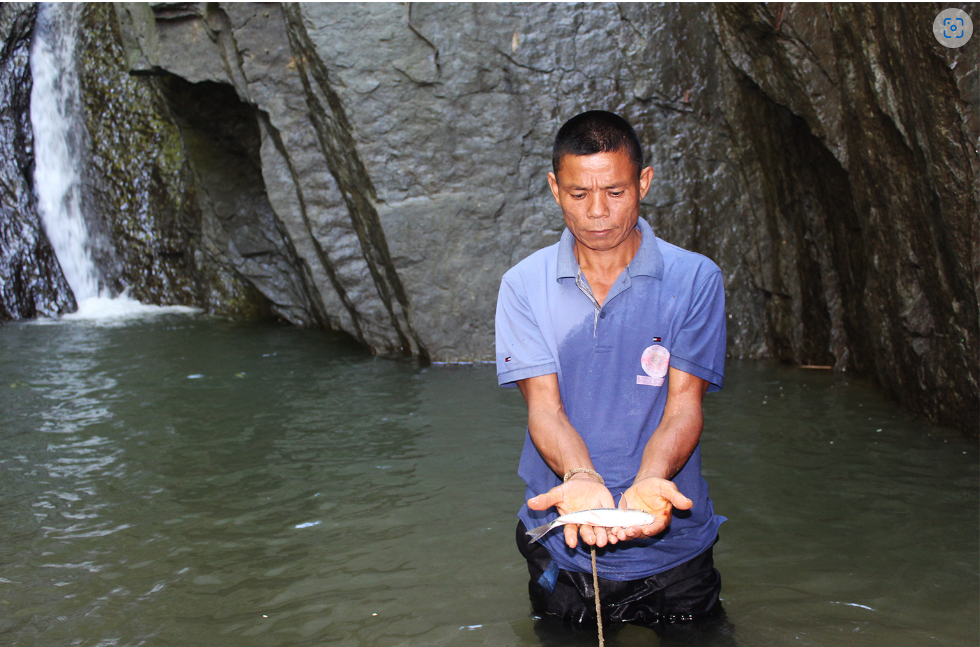
In 2022, an Indigenous person from a nearby locality caught four fish from the Debarmatha village spring and was fined 20,000 taka ($180).
Bihita Bidhan Khisa, a community mobilizer with the UNDP, said many springs have become stable, even during the dry season, resulting in the revival of fish in these springs, which he attributed to forest conservation efforts.
“Fish cannot be found in all the springs [in the area] due to habitat loss. Fish are only to be found in a very few springs where forest conservation efforts have been taken,” he said.
Benoy Kumar Barman, senior scientist at the Bangladesh office of WorldFish, a development NGO, called the revival of putitor mahseer populations in this region “an amazing matter,” given that scientists had feared the species was on the verge of extinction in Bangladesh.
Yet despite the conservation success, the species remains under severe threat in Bangladesh due to overfishing, loss of habitat, and climate change impacts. It’s extremely rare to find putitor mahseer in its natural habitat in Bangladesh, according to the country’s Red List of threatened species.
“That is why urgent conservation efforts like CHTWCA are needed to save Tor putitora and other ecologically important species from extinction,” Barman said.
Be a part of the incredible journey to preserve biodiversity, protect natural springs, and revive endangered species like the putitor mahseer fish. Learn how local communities, supported by USAID and UNDP, are making a real impact. Together, we can ensure a sustainable future for our environment and the generations to come. Discover more about this inspiring story and get involved today
Related
content
content

 Locations
Locations



